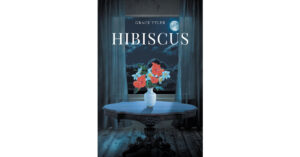Popularity Views : 30
Studio CarryOnHarry Desk — Unraveling the Mystique of Latinx Cinema: A Cultural and Artistic Odyssey
In the world of cinema, few movements evoke as much passion and vibrancy as Latinx cinema. As a senior journalist with over two decades of blogging experience at Studio CarryOnHarry, I have witnessed the evolution of this cinematic genre, where rich narratives intertwine with cultural heritage, social critique, and artistic expression. In this article, we will delve deep into the phenomenon of Latinx cinema, exploring its roots, contemporary relevance, and the voices that are elevating this vibrant narrative to global recognition.
The Historical Tapestry of Latinx Cinema
To grasp the full significance of Latinx cinema, we must first look back at its inception. The beginning of Latinx representation in film can be traced to the silent era. Early depictions were often stereotypical, focused on tropes that marginalized the complex identities and experiences of Latinx individuals. Figures like Ramón Novarro and Lupe Vélez emerged, attempting to carve a niche in Hollywood, yet often found themselves constrained by the industry’s racial and cultural prejudices.
The post-war era brought a transformation in the portrayal of Latinx characters. The Golden Age of Mexican cinema during the 1940s and 1950s introduced a myriad of films characterized by musical numbers, melodrama, and social commentary. Icons like Pedro Infante and María Félix became household names, providing audiences with an escape while subtly tackling social issues. However, globalization’s promises now seemed dimmed by a series of missed opportunities.
A New Wave: The Rise of Contemporary Latinx Filmmakers
Fast forward to the late 20th and early 21st centuries. A surge of filmmakers began to challenge the status quo, infusing their work with authentic voices and narratives. Directors such as Alejandro González Iñárritu, Guillermo del Toro, and Alfonso Cuarón have brought Latinx stories to the forefront, showcasing cultural richness while crossing cinematic boundaries. Their films, like “Birdman,” “Pan’s Labyrinth,” and “Roma,” aren’t merely artistic expressions; they are cultural commentaries that speak to both Latinx and broader audiences.
This contemporary wave of Latinx cinema is not just a celebration of identity; it serves as a platform for dialogue about critical social issues. The emergence of a new generation of filmmakers such as Lulu Wang (“The Farewell”) and Sebastián Lelio (“A Fantastic Woman”) exemplifies this trend. Textured narratives exploring themes of identity, family, and the immigrant experience often resonate deeply, transcending geographical distances.
Cultural Context: More Than Just Entertainment
Film, as an art form, is a reflection of society, and Latinx cinema encapsulates the multifaceted experiences of Latinx communities across borders. The socio-political landscape faced by Latinx individuals has shaped the cinematic narratives that emerge from this community. Stories surrounding immigration, racial dynamics, and cultural intersectionality feed the creative energies of filmmakers and storytellers, enabling them to push boundaries and challenge stereotypes.
As a personal observation from my years in the industry, it’s fascinating to watch how audiences engage with these stories. Films like “Coco” have garnered widespread acclaim, shining a light on Día de los Muertos while attracting non-Latinx audiences to appreciate the culture deeply. The success of such films demonstrates the universality of Latinx narratives — everyone has a family, everyone experiences loss, and everyone cherishes heritage.
Inclusivity in Storytelling: A Cinematic Revolution
If there’s one thing the Latinx film movement teaches us, it’s the importance of inclusivity in storytelling. The industry is witnessing a paradigm shift as many voices that have long been sidelined are finally being given the opportunity to speak. Representation matters, not only for Latinx audiences but for society as a whole.
There’s a certain beauty in the fact that we now see stories being told from different perspectives, incorporating diverse experiences that enrich the cinematic landscape. Films like “In the Heights,” directed by Jon M. Chu, artfully merge the sounds, colors, and stories of the Latinx community, furthering ambition in musical filmmaking while rooting the narrative firmly in cultural specifics, celebrating identity without sacrificing universal relatability.
The Global Perspective: A Cinematic Language Deserves Recognition
As we examine Latinx cinema, it is crucial to recognize its impact beyond borders. Many Latinx films have won international awards, breaking into foreign markets and reshaping global perceptions about Latin American culture. Movies entered mainstream consciousness, such as “Roma,” which received several Academy Awards, showcasing the magnetism of Latinx storytelling.
In an increasingly interconnected world, the international film community must acknowledge and support this growing movement. The language of cinema is universal yet distinct; Latinx filmmakers are crafting unique stories that resonate with global audiences, transcending language barriers while maintaining a strong cultural essence.
Challenges on the Horizon
Yet, despite the progress, challenges remain. The film industry must still confront systemic issues that inhibit equity in representation. The 2020 Oscars sparked valid conversations about diversity and inclusion across the board, yet many in the Latinx community still feel underrepresented as storytellers. The call for more Latinx voices behind the camera and in leadership roles is stronger than ever.
Moreover, the rise of streaming platforms like Netflix and Hulu has opened new avenues for talking heads and underrepresented creators alike; however, the transition must account for balanced narratives rather than existing merely as a token presence. The responsibility lies within filmmakers to ensure that their promotions aren’t just at the surface level – but also engage in authentic practices to elevate artistic voices that have traditionally been muted.
The Role of Audiences: Shaping the Future
As viewers, we possess significant power in shaping the future of Latinx cinema. The support we lend, whether through attendance at film festivals, streaming, or social media endorsements, translates into the success and visibility of films that depict Latinx experiences. In turn, this can lead to more funding, more projects, and ultimately, a richer tapestry of storytelling.
In this social media age, audience interaction has drastically transformed the landscape. Hashtags, reviews, and online discussions surrounding a film can significantly impact its reach and success. The responsibility lies with us to engage meaningfully and thoughtfully.
Reflecting on Our Journey
The journey of Latinx cinema is one marked by resilience, creativity, and a continued fight for representation and acknowledgement. As we look back at how far we’ve come, we must remain vigilant in our advocacy for authentic storytelling and inclusivity. The landscape continues to evolve, bursting with stories waiting to be seen and heard.
In the words of famed filmmaker, Guillermo del Toro, “We are not heroes. We are words that have been on the tip of your tongue.” Each story told in the realm of Latinx cinema is an echo of shared experiences, cultural contexts, and unyielding hope—a cinematic language that deserves our respect and attention.
As we continue to champion diverse narratives on and off the screen, it’s essential to embrace the complexities of identity that Latinx cinema offers, celebrating each story’s bravery and uniqueness. This evolution will not only enrich our understanding but ultimately lead to a cinema landscape that reflects the vibrant world we inhabit.
As we embrace the unfolding narrative journey within Latinx cinema, it serves as a reminder: every voice matters. Let us celebrate these stories and champion the creators behind them—because in their tales, we find pieces of our humanity mirrored back at us.
For those interested in exploring more about this captivating genre, visit Carry On Harry Interviews to speak with filmmakers and industry experts. For deep dives into specific films or topics in Latinx cinema, the world’s resources are but a click away through Google.
Closing Thoughts
As we navigate the cinematic terrain, let’s foster an appreciation for the stories that resonate with a multitude of experiences. Latinx cinema is not just a genre—it’s a powerful movement that transcends artistic expression, creating waves of dialogue that can unite us all.
#LatinxCinema #DiversityInFilm #VoicesOfCinema #RepresentationMatters #CarryOnHarry













